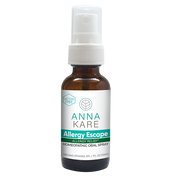Different times, places, and cultures have equipped us with ways to create remedies and medicines that ease ailments and reduce suffering. Various types of medicine, homeopathy and normal medicine (frequently called conventional or modern medicine) being two prominent examples, have established a track record of helping people worldwide. These two forms of medicine offer different approaches and practices, but they have some similarities.
What Is Homeopathic Medicine?
Homeopathic medicine is a good fit for people who prefer a more natural approach to their health. The founder of homeopathy, Dr. Samuel Hahnemann, published the Essay on a New Principle in 1796. Homeopathy has remained a constant and popular natural healing modality ever since, particularly in Europe, South America, India, and the United States.
Homeopathic medicine involves the principles of “like curing like” and “the minimum dose.” For example, a person with a poison ivy rash on their arm may find relief from the homeopathic remedy Rhus Toxicodendron (Latin for poison ivy). To prepare the homeopathic medicine, a poison ivy tincture is prepared and diluted with water multiple times, and then vigorously shaken or potentized. The remedy with a trace amount of poison ivy is generally taken orally and/or applied to the afflicted area and will help trigger a healing response.
Therapies are based on the totality of symptoms, including physical, mental, and emotional signs. The majority of homeopathic remedies are taken and absorbed directly by mucous membranes in the mouth and presented as sprays, drops, pellets, and chewable tablets. They are not swallowed and absorbed via the digestive system. Creams and gels are also used and applied to the skin.
The Homeopathic Pharmacopoeia of the United States (HPUS) is the official compendium for homeopathic remedies in the U.S. To be included in the HPUS, all remedies—primarily made from plants and minerals—must go through a homeopathic proving, also known as a homeopathic pathogenic trial (HPT). During an HPT, homeopathically prepared substances are tested on a wide variety of healthy volunteers. The individuals record the effects or health disturbance induced by the substances, revealing a pattern unique to the substance, which is used as a basis for therapy. The effects on healthy individuals are temporary. After the HPUS approves the remedy, the FDA regulates the manufacturing process, which follows current good manufacturing practices (cGMP).
Over the last 200 years, over 2,000 validations have occurred and established a very high safety record for homeopathic remedies.
What Is Considered Normal Medicine?
In most hospitals, clinics, and urgent care facilities, conventional medicine—often referred to as normal medicine—is the primary treatment method.
Normal medicine utilizes the knowledge from current medical publications and the outcomes of diagnostic tests and screenings to prescribe pharmacological medications and treatments, from minimally invasive procedures to surgery. The medications are mostly prepared synthetically and developed by drug manufacturers after extensive clinical trials. They measure the medicine’s effectiveness on individuals and animals exhibiting very specific symptoms and signs, whether physical, mental, or emotional.
Conventional drugs are primarily presented as pills and capsules that are swallowed and absorbed by the digestive system. All medications are approved by the FDA, but some may trigger mild to serious side effects. Keep in mind that a drug is considered safe when its benefits exceed its risks.
Many conventional medications have roots in herbal medicine and the documentation of the uses of plants collected by ancient and traditional cultures.
What Do Homeopathic and Conventional Medicine Have in Common?
Despite their clearly different approaches, homeopathic and modern conventional medicine bear some similarities.
Both homeopathic and modern medicine start with symptoms and signs to determine the form of therapy or treatment. Both use substances to address a person’s ailments, and they use the knowledge developed by herbal medicine practitioners over centuries to document and administer remedies.
Popular Uses of These Two Medicines
Homeopathic medicine and normal medicine have strengths and weaknesses to consider when dealing with a health condition. Many people visit homeopathic medicine stores online or in person to browse through remedies that can help strengthen their overall health and immune system, protect them from illnesses, and address acute ailments. Always visit your doctor if a condition worsens despite the best holistic efforts.
Normal medicine focuses on very specific conditions, often at a progressed stage of illness. Conventional medication is generally not prepared for prevention and the strengthening of body systems, but it can be very effective when dealing with severe and life-threatening health situations.
This is why more and more individuals and families consider holistic healing modalities such as homeopathy for everyday ailments and maintaining a strong, healthy body and a combination of both forms of medicine for acute and severe conditions. A complementary health approach can lead to the optimal solution when dealing with serious illnesses.


















